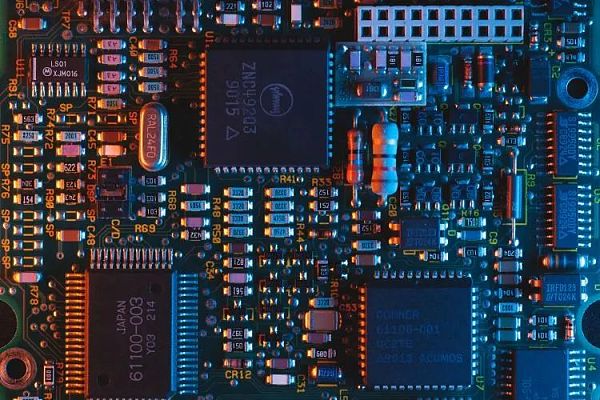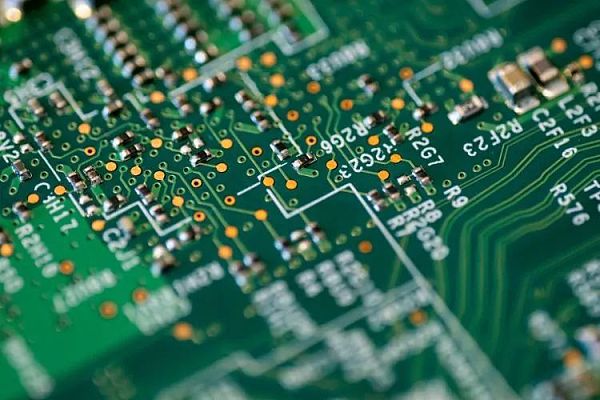It is not surprising that OpenAI is making chips, what is surprising is if OpenAI does not make chips.
OpenAI making chips is expected, but it would be surprising if they didn't.01
The latest entrant in the self-made chip trend is OpenAI, according to sources cited by Reuters. OpenAI is planning to develop dedicated AI chips.
Currently, this plan is still in the early stages and there have been no substantial developments. After all, the cost and difficulty of developing AI chips is not less than that of developing large language models like GPT. It would require billions of dollars of continuous investment over several years to make it possible. Especially for OpenAI, as a start-up company, they have no previous experience in developing hardware, which means that this investment may not necessarily succeed.
However, OpenAI’s move to develop self-made chips does not come as a surprise to the market. Silicon Valley and Wall Street are closely watching the progress of this artificial intelligence unicorn, with one of the key focuses being whether OpenAI’s financial situation and revenue scale can meet its vision, following the release of the groundbreaking chatGPT product.
- Vitalik proposed a decentralized solution to the Ethereum staking protocol.
- Ethereum’s native LST adopts a two-tier staking design Lido killer?
- Court ruling confirms Ripple does not own XRP ledger.
There are several bottlenecks that prevent OpenAI from scaling up, and chips are one of them. Currently, OpenAI has access to a large amount of computing power provided by NVIDIA graphics cards through its collaboration with Microsoft, both directly and indirectly. The collaboration between OpenAI and NVIDIA can be traced back to its early days – Jensen Huang gifted the world’s first DGX supercomputer to OpenAI for research purposes.
However, this collaboration comes at a cost, especially as NVIDIA’s monopoly in the field of artificial intelligence computing power has affected OpenAI’s research and development progress. CEO Altman has repeatedly stated that OpenAI is short of computing power, which not only leads to a sharp increase in operating costs for large models, but also affects the development of new models.
Once OpenAI has self-made chip technology, it will significantly benefit the development process of its artificial intelligence, including greatly reducing costs, more direct and precise control of the research and development progress, and getting rid of various direct or indirect interventions and controls from NVIDIA and Microsoft. Much of OpenAI’s computing power is provided through Microsoft’s Azure platform.

02
In fact, getting rid of the bottleneck of NVIDIA’s computing power is the common demand of all major players in the large model field, including Microsoft. After years of rumors, there are reports that Microsoft’s self-made artificial intelligence chip, codenamed Athena, will be unveiled at the annual developer conference in Seattle next month.
Currently, very little is known about Athena, and it is even uncertain whether the chip will be called Athena in the end. What is known is that this chip is designed specifically for the development of artificial intelligence large models and data centers. There was once speculation that this chip was developed in collaboration between Microsoft and AMD, but Microsoft later denied this rumor.
It is reported that this chip has entered the small-scale testing phase, and engineers from both Microsoft and OpenAI are already trying out this chip to verify its performance.
Microsoft’s Project Athena started implementation in 2019, which appears to be lagging behind Google’s TPU and Amazon’s self-developed chip development plans. The outside world is concerned about how much performance improvement Microsoft’s chip solution will bring and, more importantly, how it will affect the cooperation between Microsoft and OpenAI.
The initial cooperation between OpenAI and Microsoft was seen as a strong alliance, but it soon proved to be overly optimistic. Both parties compete in areas such as model development and customer resources, presenting a complex nested relationship of “fighting and pulling”. Now this relationship has extended to the self-developed chip field.
It turns out that OpenAI does not want to rely entirely on the resources provided by Microsoft and is making a significant move to independently develop AI chips.
03
Now the question goes back to the beginning: if OpenAI determines the general direction of self-developed chips, what is the most likely next step? Many people are looking at OpenAI’s investment portfolio, considering that CEO Altman was the boss of the famous incubator Y Combinator, and directly acquiring a chip company may be a good choice.
Atomic Semi has caught people’s attention. It has received investment from the OpenAI Startup Fund and is currently valued at over $100 million. The introduction on its official website states that the company’s vision is to build “anything”. Its two founders, Sam Zeloof and Jim Keller, the former gained popularity by hand-crafting chips in his own garage, while the latter has an illustrious career in the semiconductor industry and led the early development of AMD’s Zen architecture, enabling AMD to make a comeback in the processor field.
In fact, Jim Keller, who has worked at AMD, Intel, Broadcom, and Apple, is also the CEO of another AI chip startup called Tenstorrent. This company, which has raised over $300 million in 7 rounds of funding, directly targets the field of large-scale model training and inference. Its chips are based on the RISC-V architecture. In early October, Tenstorrent announced a partnership with Samsung, which will manufacture chips for them.
Therefore, overall, considering Sam Altman’s influence and connections in the venture capital circle, OpenAI has quite a few options to make a strategic move in self-developed chips. One advantage of starting from scratch is that it can avoid the burden of architecture and compatibility, especially with the ability to launch highly targeted products. For example, an acceleration chip based on the RISC-V architecture seems to be a good choice.
Of course, originally, OpenAI had another safer way to promote the pace of self-developed chips, which was to collaborate with other major companies. However, Microsoft’s Project Athena has clearly shown that OpenAI seems to prefer complete self-reliance, which is in line with the company’s consistent style.
Another recent rumor can prove this: there are rumors that Sam Altman, Masayoshi Son, and former Apple chief designer Jony Ive are planning to build new “AI hardware”, which is obviously an area that OpenAI has not ventured into before. It can be seen that the overall strategy of OpenAI is based on powerful large-scale model capabilities and independent development in all relevant areas – this is clearly a strategy for building a giant enterprise.

04
The wave of self-developed chips is continuing to rise. Now all major cloud computing companies are actively promoting the development of self-developed chips. The most important reason is the saying “the world has suffered from NVIDIA for a long time.”
The monopoly position is actually secondary. The key is that NVIDIA’s own production capacity is not enough, and it is also implementing a “distribution” system similar to luxury goods, which has naturally caused dissatisfaction among the major companies. Especially with NVIDIA’s huge profits from this wave of AI boom, Huang Renxun actively invested in a number of related startups, which all have one common characteristic – they firmly embrace NVIDIA’s hardware ecosystem. These green factory factions will be powerful competitors in the cloud market in the future, so the major companies will certainly not allow this situation to expand.
Self-developed chips are a necessary path, and they also have the possibility of breaking NVIDIA’s monopoly. Self-developed chips can customize relevant performance according to their own needs, which may not be obvious enough for cloud providers, but it is very beneficial for companies like OpenAI, an artificial intelligence company. It doesn’t need to consider the complex needs of various users in the data center (such as bandwidth), it only needs to focus on improving parallel computing efficiency. For many chip startups, this wave of self-developed chip trend is also a huge opportunity, especially for chips based on the RISC-V architecture. In this regard, China, as one of the largest players in this open-source architecture, even has a first-mover advantage.
Although there is currently no one who can truly and substantially challenge NVIDIA’s leadership position, the entire AI chip market is clearly on the eve of intense fluctuations, and changes are coming.
We will continue to update Blocking; if you have any questions or suggestions, please contact us!
Was this article helpful?
93 out of 132 found this helpful
Related articles
- Ethereum Researcher Minimum Viable Issuance is an Important Commitment to Regular Ethereum Users
- An Introduction to Fully Homomorphic Encryption Definition and Historical Review
- friend.tech user falls victim to SIM Swap attack. Is Verizon’s SMS verification a security vulnerability?
- Sequoia Capital The challenging moment has arrived, how should we prepare?
- What are long positions and short positions?
- Three Reasons Why Ethereum Price Cannot Break Through $2000
- The king of Web3 scams is leading Pudgy Penguin to its demise.






